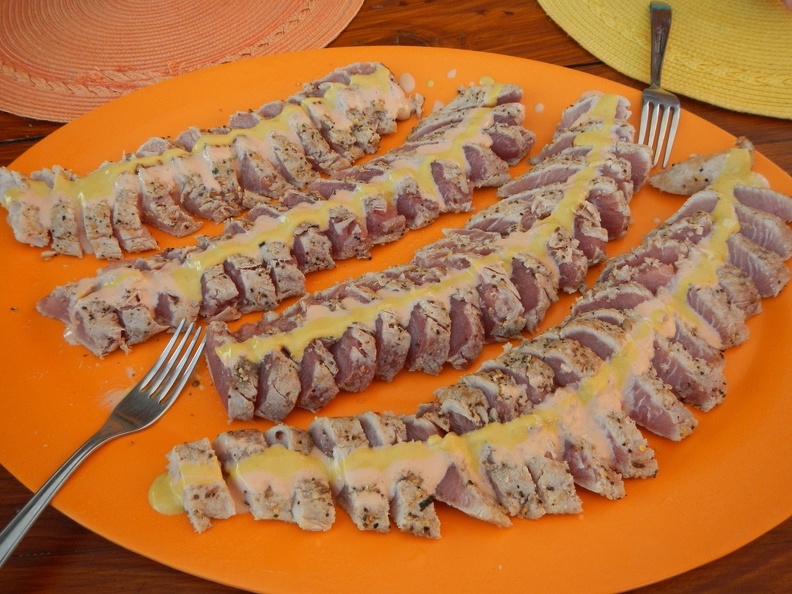Some basics on fish and fish:
Fish— Flavor— Methods for Cooking
______________________________________________________________________________________
Bass (including Kelp Bass,Sand Bass and Spotted Sand Bass aka Spotted Bay Bass—Mild—Filleted and then pan-fried, deep-fried
or baked
Cabezon—Mild—Filleted and then pan-fried, deep-fried or baked. (Do not eat the roe -- it is poisonous)
California Barracuda—Mild— Filleted and then cut into serving sized pieces. Pan-fried, deep fried, grilled.
California Halibut—Mild— Filleted and then cut into serving sized pieces. Pan-fried, deep-fried or baked
Croakers (including Spotfin, Yellowfin, Black and Corbina)—Mild—Filleted and then pan-fried, deep-fried or baked
Croaker (White)—Mild but sometimes mushy—Pan-fried whole***
Greenling—Mild—Pan-fried whole** or filleted — be sure to remove the pin bones
Jacksmelt/Topsmelt —Mild but sometimes mushy—Pan-fried whole (small)** or filleted (large) — be sure to remove the pin bones.
Lingcod—Mild—Filleted and then cut into serving sized pieces—Generally fried
Rockfish—Mild—Filleted and then pan-fried, deep-fried or baked
Sablefish—Rich, buttery taste— Smoke, broil, bake or pickle
Pacific Bonito—Fairly strong flavored along blood line— Smoke, broil, bake or pickle and can be used in suishi
Pacific Mackerel —Strong —Smoke, B-B-Q, or pickle
Pacific Sanddab—Mild —Cooked whole
Pacific Tomcod—Mild — sweet —Pan-fried whole and delicate
Sand Sole—Mild—Pan-fried whole (small), filleted and pan-fried (medium)
Scorpionfish (Sculpin) —Mild — sweet—Filleted (carefully), pan-fried, deep-fried, and delicate baked. Good for sushi.
Skate/Stingray —Mild — similar to scallops—Remove and skin pectoral fins (wings), cut into chunks or fillets and then pan-fry in butter
Surfperch/Seaperch—Mild but a little soft — surf-caught fish tend to be a little better than those caught in bays or the open ocean Pan-fried whole or filleted (remove the hair-like pin bones if filleted) and then pan-fry
Sturgeon—Mild— Fillet and cut into portion sized steaks, pan-fried, deep-fried, baked, grilled
* Although many people like sushi, far too many of our locally caught fish have parasites in them; parasites which can cause problems if the fish are eaten raw. Properly cooked, most fish present no problem.
** Small fish can be pan-fried after gutting, removing the head and gills, and removing the scales.
*** White croaker (and several other fish) are unsafe to eat in certain localities; check the California Fish and Game Regulations for specific areas in question

